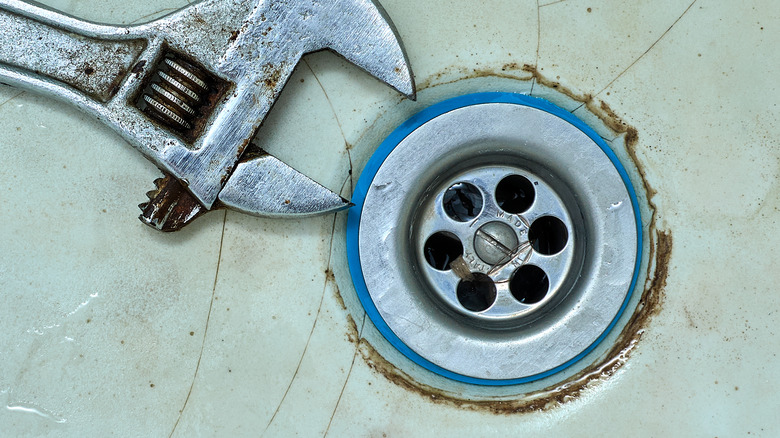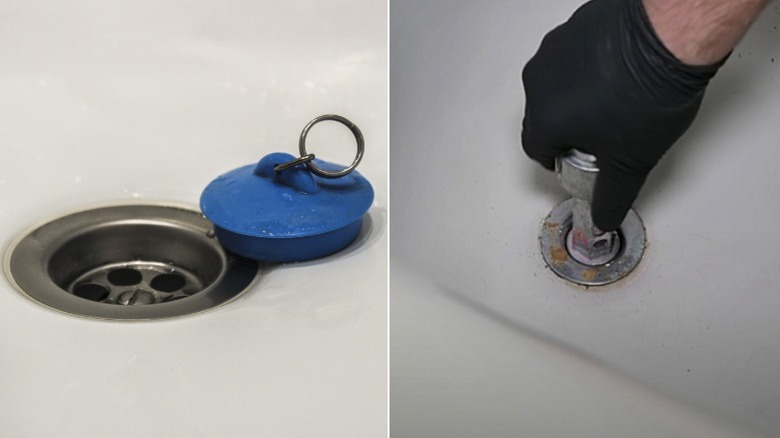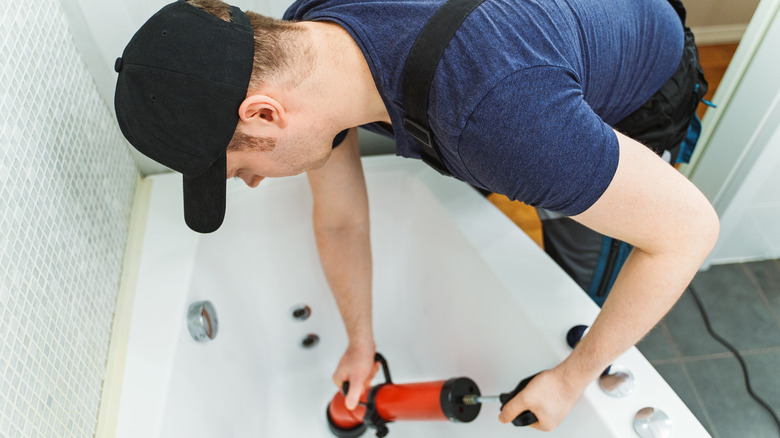The Easiest Way To Remove An Old Bathtub Drain
Working with pipes or drains around the house can be nerve-wracking if you've never done it before, but it's actually not an uncommon home repair. Typically, you'd remove (and replace) old bathtub drains if you're installing a new bathtub or your current drain leaks. Also, for a deep cleaning, such as due to a clogged pipe, you may need to remove the bathtub drain to get to the root of the problem.
Whatever your reason may be, before removing your bathtub drain, it's important to know the basics of what makes up the drain. The bathtub is connected to two pipes: The first, the main pipeline, releases water into the tub, and the second is a horizontal pipe connecting to the first, where the water gets drained. The drain fitting, meanwhile, is a rubber gasket connecting to the horizontal pipe's elbow, allowing the water to filter through, and there's also a crossbar connected to the drain basket that catches large items.
Removing a bathtub drain will typically take less than an hour's time, especially if you have a plug wrench or locking pliers on hand.
How to remove a bathtub drain
To start, you'll need to reach the drain fitting. To do so, remove the tub stopper or drain screen. Note that there are various types of stoppers, with the six most common being lift-and-turn, flip-it, toe-touch, push-and-pull, pop-up, and trip lever. Each stopper will require a different approach to removing it. To remove a flip-it drain stopper, for example, simply grasp the stopper and twist it open to pull it up and out. A trip-lever drain stopper, meanwhile, will require you to first remove the overflow grate.
Once the drain stopper/screen is removed, perhaps the easiest way to remove a bathtub drain is with a plug wrench: Attach the plug wrench to the crossbar of the drain basket and turn it counterclockwise.
If you don't happen to have a plug wrench in your toolbox, however, you could use locking pliers instead. Ensure the size you choose is right for your bathtub's drain, meaning it can get around the drain's crossbars and is snug enough that you can turn it. As with the plug wrench, you'll want to firmly clamp your locking pliers onto the metal crossbar — specifically, its center — and then turn the pliers counterclockwise.
After the drain's removed, clean away the old plumber's putty around the opening.
When it's time to call in a professional
While removing an old bathtub drain will take time and patience, you still may not be successful in the end. If this is the case, you may need help from a professional.
A few signs that'll tell you, you need to call a plumber is when the drain stopper is stuck and won't come out after you've tried unscrewing it. Another instance would be if you've removed the plug, but the basket gets stuck or breaks. For such scenarios, it's best to call for help; a professional can continue where you left off without damaging the bathtub. What you don't want to do is force the drain out with your tools, only to damage the tub and the pipe in the process.
Still, another reason you might call a plumber is if while you're cleaning the plumber's putty after removing the drain, some of the compound falls down the drain. The reason? Plumber's putty doesn't break down, so if it does go through the pipe, it could lead to a clog and a greater future plumbing problem.


